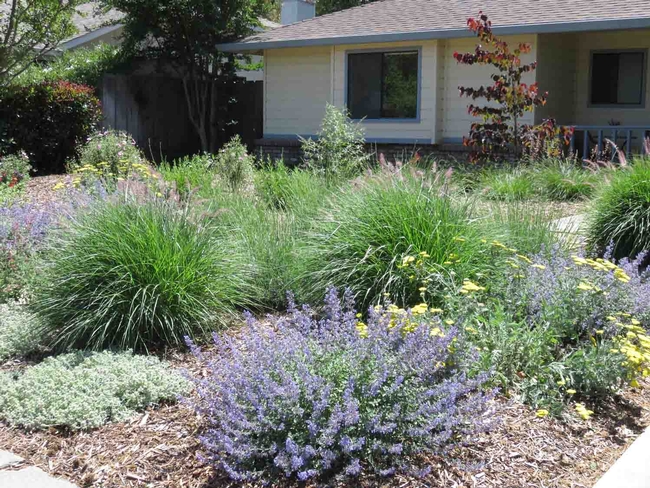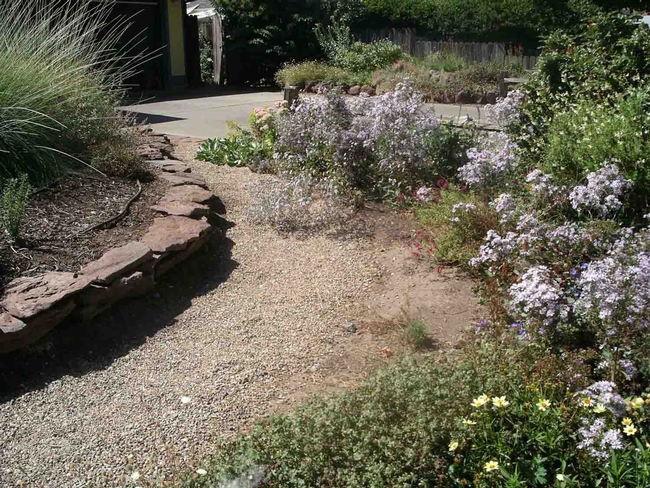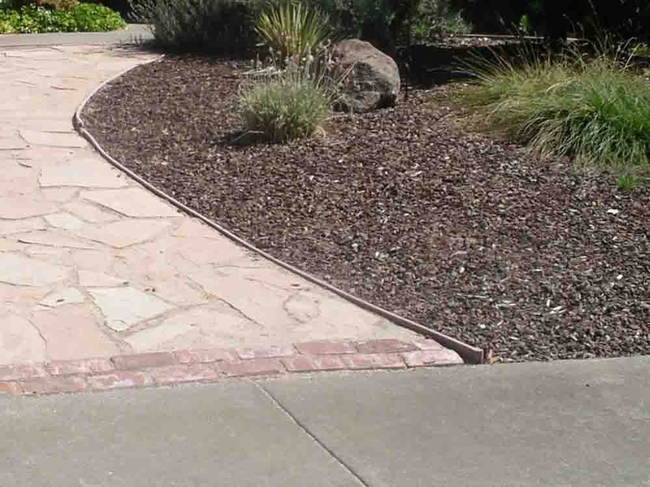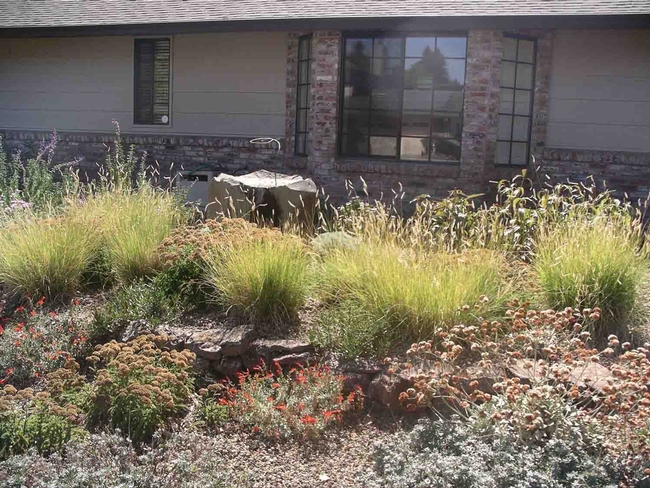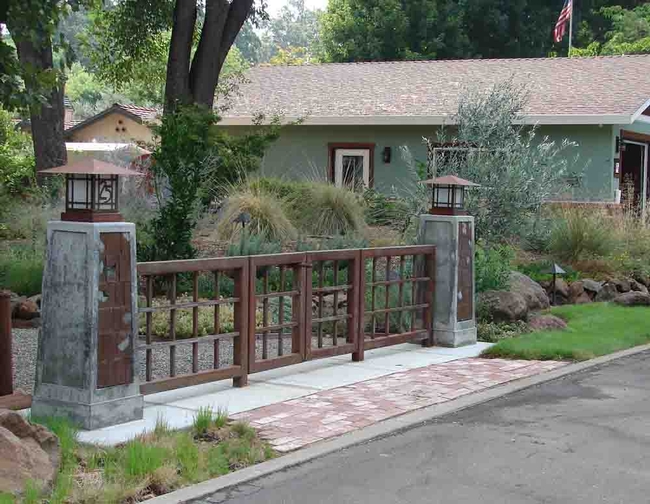A short drive around Chico will reveal that lawn is a prominent landscape feature for the majority of homes. Yet we seldom see people outside using their front lawns. Maintaining a lawn just to view wastes time, energy, water and money. According to a 2011 study sponsored by the California Department of Water Resources (“California Single Family Water Use Efficiency Study”), the average household uses 360 gallons of water per day, around 50% of it outdoors. Replacing lawn with waterwise landscaping can reduce outdoor water use by 30-70%. In addition, lawns need mowing, fertilizing and weeding.
Native plants in front yard, Jeanette Alosi
Start with hardscaping: walkways, gravel paths, small patios or decks, dry creek beds and retaining walls. These provide visual interest and reduce irrigated areas. Plan a pleasing and obvious walkway to your front door. You can edge it with intervals of plantings, in the ground or in urns. Meandering gravel paths provide a functional and low-cost way to move about the garden. A small patio invites you to relax. Dry creek beds and small retaining walls separate planting areas and provide elevation changes. You can also use an edging of stone or brick to separate planting areas.
Berm with dry stacked flagstones, Cindy Weiner
Flagstone walkway to door, Cindy Weiner
The New Sunset Western Garden Book and Calscape (California Native Plant Society's database of native plants) provide information about waterwise plants. If your yard will include automatic irrigation, group together plants with similar water needs.
The UC Cooperative Extension WUCOLS database estimates the water needs of thousands of garden plants and is a valuable tool for grouping plants into hydrozones.
Consider adding focal points. A water feature attracts birds to the garden. It can be as elaborate as a fountain or as simple as a ceramic dish. Large boulders also provide visual interest. A bench flanked by large pots of colorful flowering plants invites you to sit and enjoy your garden.
Birdbath made from large boulder, Cindy Weiner
Visit the Master Gardener Demonstration Garden at Patrick Ranch (10381 Midway in Durham) to see a variety of gardens that are waterwise, interesting and beautiful without relying on areas of lawn. Our gardens are free to visit and are open whenever Patrick Ranch is open to the public.
A newly-finished project -- hardscape completed and happy plants in place, Eve Werner
